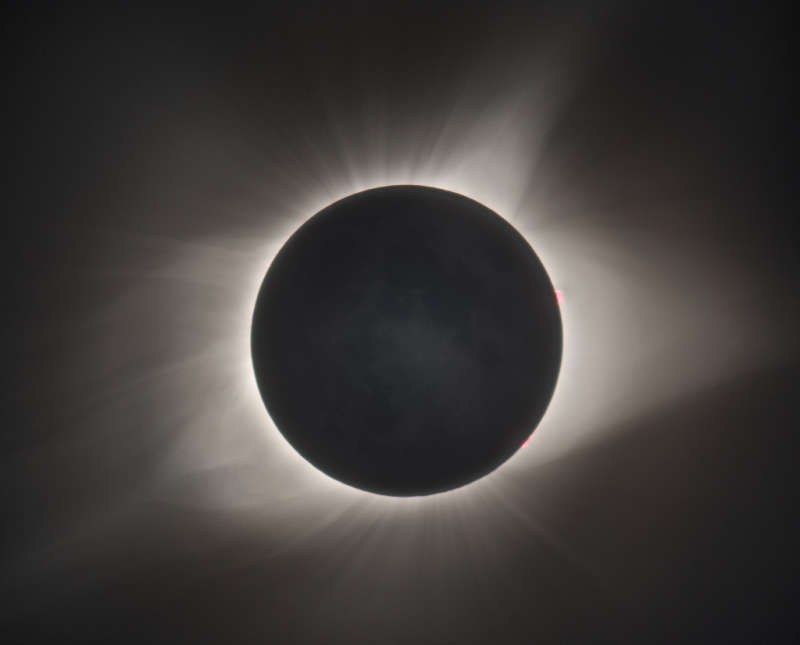
|
Credit & Copyright: Derek Demeter
(Emil
Buehler Planetarium)
Explanation:
During a total
solar eclipse, the Sun's extensive outer atmosphere, or corona, is
an inspirational sight.
Streamers and shimmering features visible to the eye span a brightness
range of over 10,000 to 1, making them notoriously difficult to capture
in a single photograph.
But this composite of telescopic images
covers a wide range of exposure times to reveal
the crown of the Sun
in all its glory.
The aligned and stacked digital frames
were taken in clear skies above
Stanley, Idaho in the Sawtooth Mountains during the Sun's
total eclipse on August 21.
A pinkish solar prominence extends
just beyond the right edge of the solar disk.
Even small details on the dark night side of the
New Moon can be made out, illuminated by sunlight
reflected from a Full Earth.
|
January February March April May June July August September October November December |
| ||||||||||||||||||||||||||||||||||||||||||||||||
NASA Web Site Statements, Warnings, and Disclaimers
NASA Official: Jay Norris. Specific rights apply.
A service of: LHEA at NASA / GSFC
& Michigan Tech. U.
Based on Astronomy Picture
Of the Day
Publications with keywords: total solar eclipse - Solar Corona
Publications with words: total solar eclipse - Solar Corona
See also:
